介绍
Composite_Micromechanics 类主要用来分析复合材料的微观力学行为,运算方法来自于Practical-Micromechanics,这是一个比较专业的微观复合材料分析工具,部分复合材料的宏观预测属性跟实际数据相差很少。
本意是将其中微观的复合材料的渐进损伤分析和有限元分析相结合,复合材料每层方向不同,当一层的树脂产生裂纹,其他层的纤维会进一步阻止裂纹的发展,线性分析难以观测到该效应。
类结构
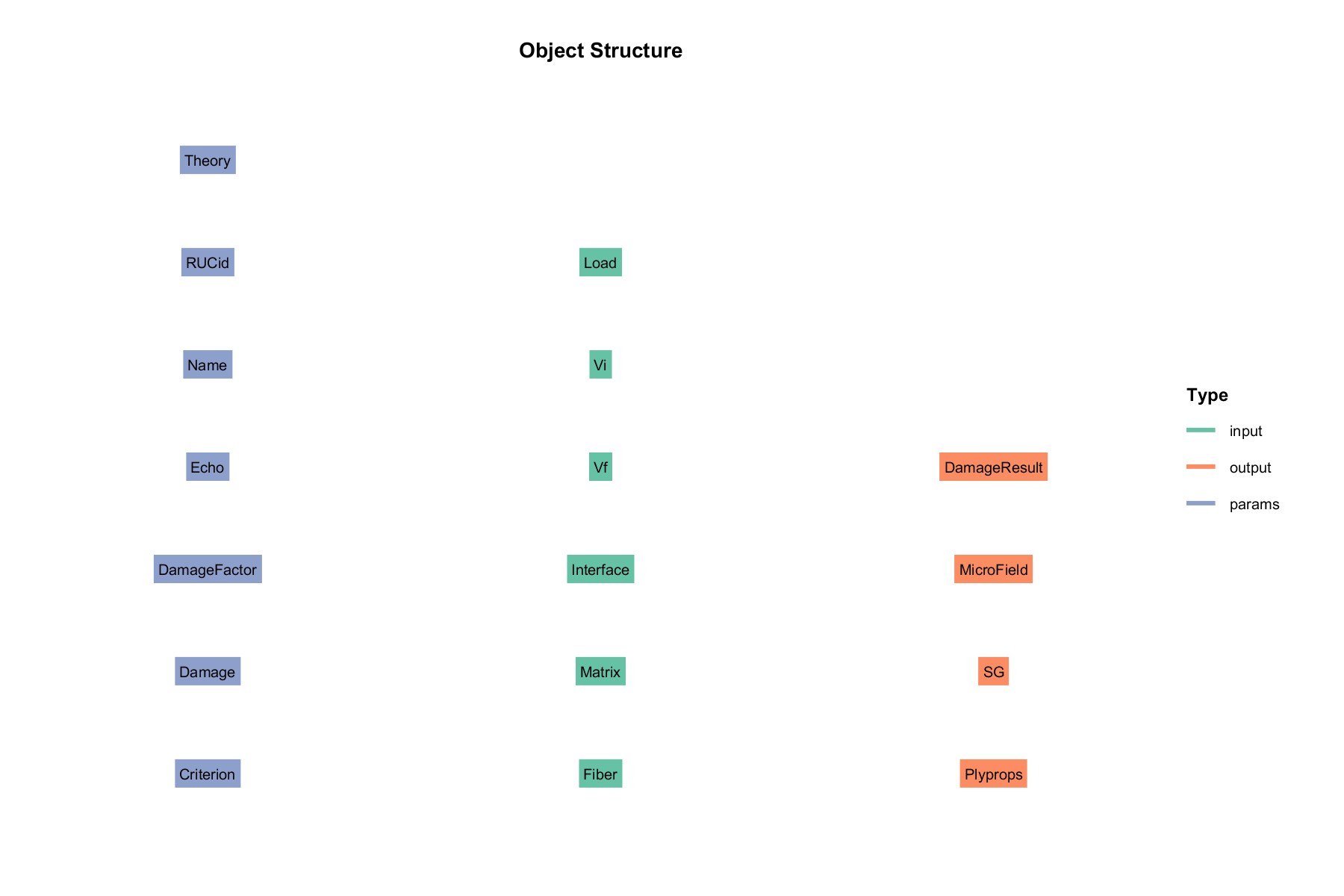
输入 input:
- Load : 应力或应变
- Vi: 树脂和纤维交界体积率,没有则为空或者0
- Vf: 纤维体积率
- Interface: 交界材料
- Matrix : 基底材料
- Fiber : 纤维材料
参数 params:
- Theory : 方法
- RUCid : 晶格编号,参见附录
- Name : 名称
- DamageFactor : 破坏对应材料参数的折减系数
- Damage : 开启微观力学的渐进损伤分析
- Criterion : 失效准则
输出 output :
- DamageResult : 损伤分析结果
- MicroField: 微观晶格数据
- SG: 力的方向矢量
- Plyprops : 复合材料属性预测结果
案例
Stand-alone micromechanics effective properties (Flag=1)
采用不同方法估算复合材料的属性。
S=RMaterial('Composite');
mat=GetMat(S,[3,4]');
inputStruct.Vf=0.55;
inputStruct.Fiber=mat{1,1};
inputStruct.Matrix=mat{2,1};
paramsStruct.Theory='All';
Ply= method.Composite.Micromechanics(paramsStruct, inputStruct);
Ply=Ply.solve();
Plot(Ply);
PlotAlpha(Ply);


Stand-alone micromechanics effective properties using GMC (Flag=2)
采用GMC法估算复合材料属性。
S=RMaterial('Composite');
mat=GetMat(S,[3,4]');
inputStruct.Vf=0.55;
inputStruct.Fiber=mat{1,1};
inputStruct.Matrix=mat{2,1};
paramsStruct.Theory='GMC';
paramsStruct.RUCid=26;% 2,7,26
Ply= method.Composite.Micromechanics(paramsStruct, inputStruct);
Ply=Ply.solve();
Plot(Ply);
PlotAlpha(Ply);


Plot Local field (Flag=3)
S=RMaterial('Composite');
mat=GetMat(S,[3,4]');
inputStruct.Vf=0.55;
inputStruct.Fiber=mat{1,1};
inputStruct.Matrix=mat{2,1};
inputStruct.Load.Type=[2,2,2,2,2,2];% 2-Stress 1-Strain
inputStruct.Load.Value=[0,1,0,0,0,0];
paramsStruct.Theory='MT';% 'Voigt' 'Reuss' 'MT' 'MOC' 'MOCu'
Ply= method.Composite.Micromechanics(paramsStruct, inputStruct);
Ply=Ply.solve();
PlotMicroField(Ply);
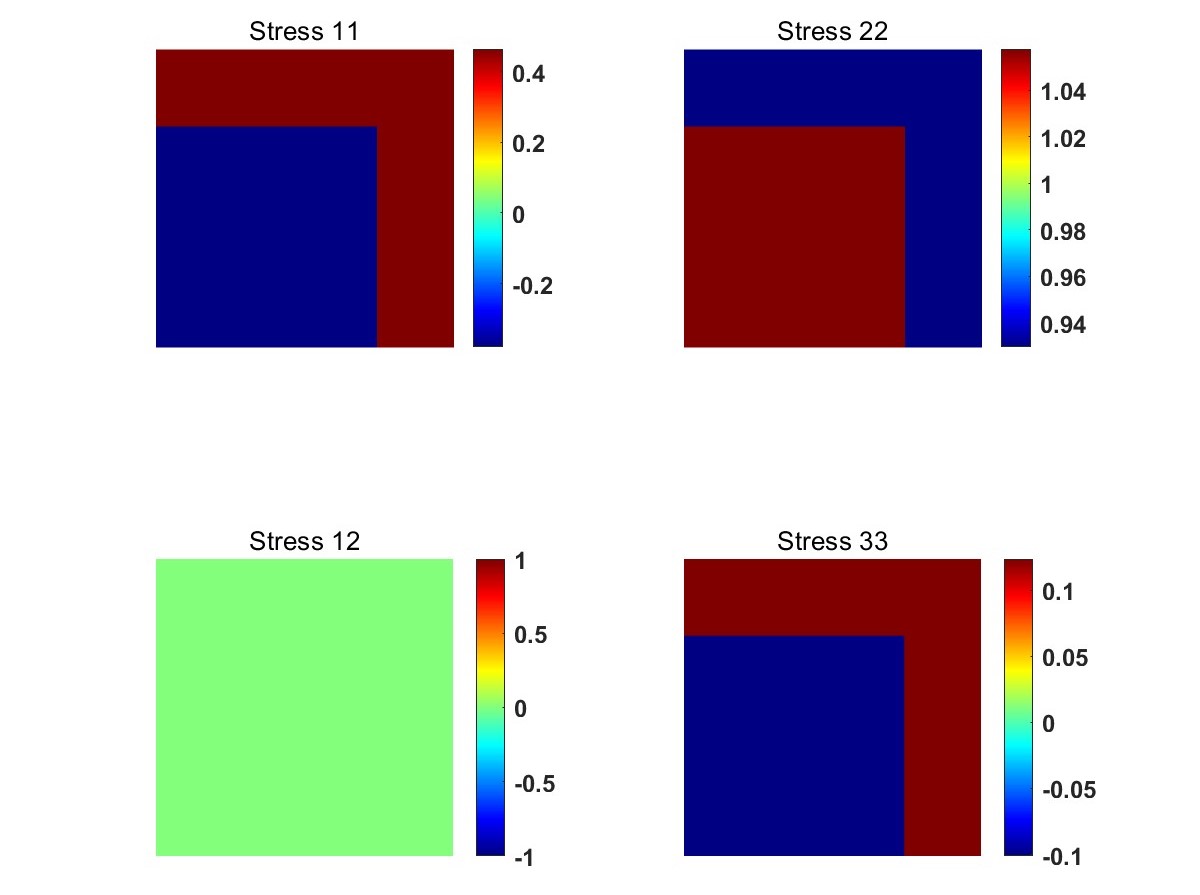
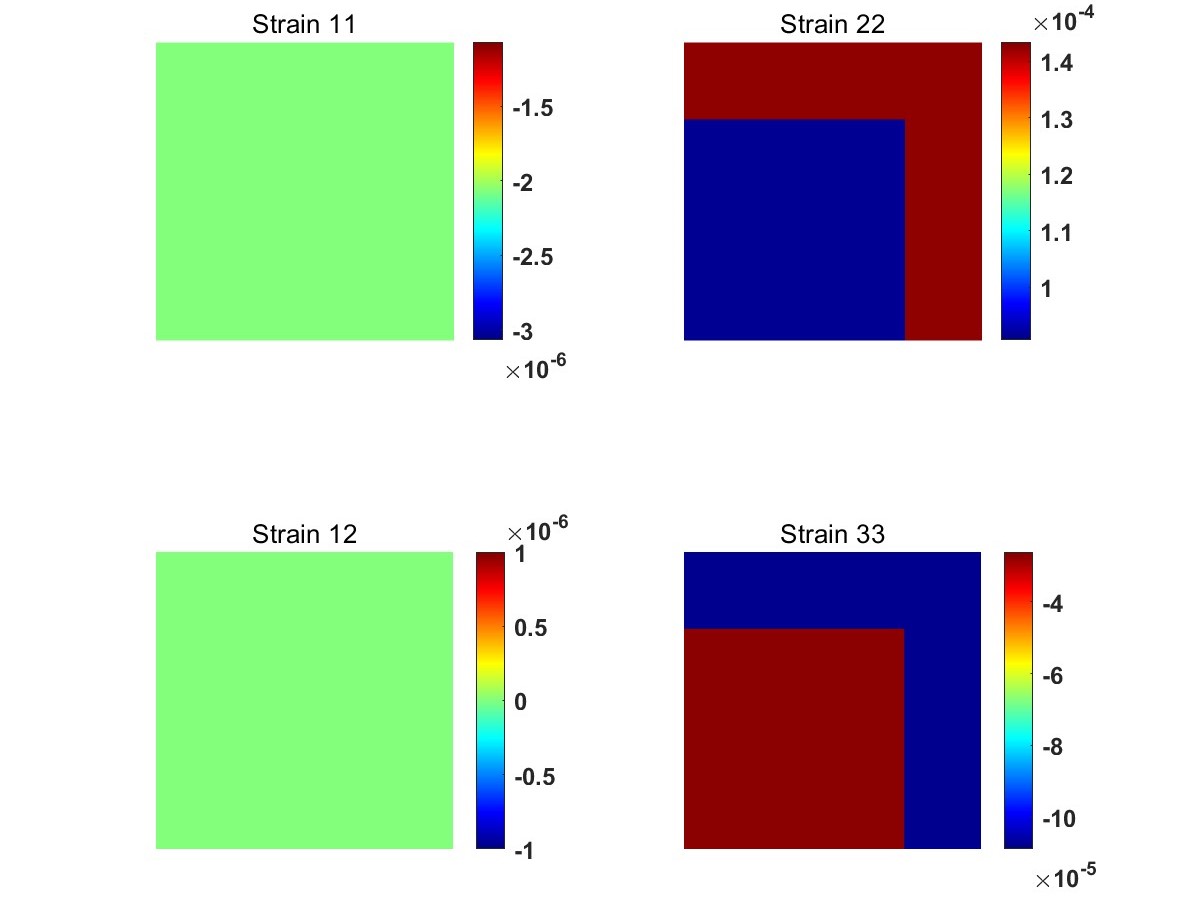

SiC-SiC with interface BN_Coating using GMC RUCid=105 (Flag=4)
S=RMaterial('Composite');
mat=GetMat(S,[29,30,31]');
inputStruct.Vf=0.28;
inputStruct.Vi=0.13;
inputStruct.Fiber=mat{1,1};
inputStruct.Matrix=mat{2,1};
inputStruct.Interface=mat{3,1};
paramsStruct.Theory='GMC';
paramsStruct.RUCid=105;
Ply= method.Composite.Micromechanics(paramsStruct, inputStruct);
Ply=Ply.solve();
Plot(Ply);
PlotAlpha(Ply);
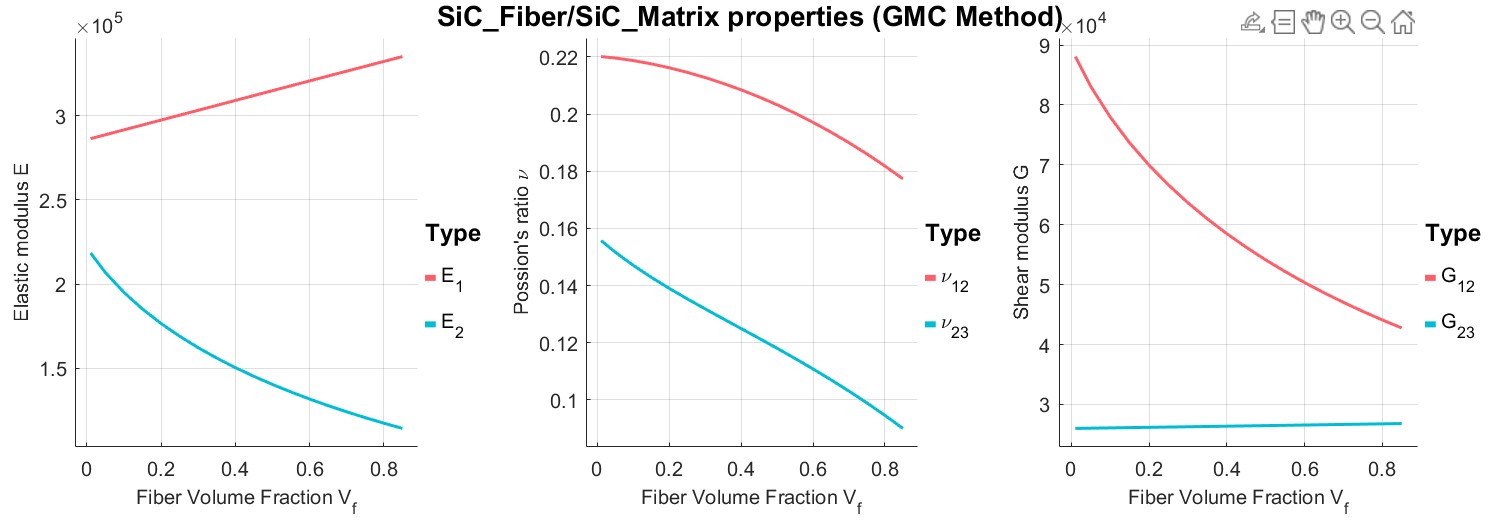
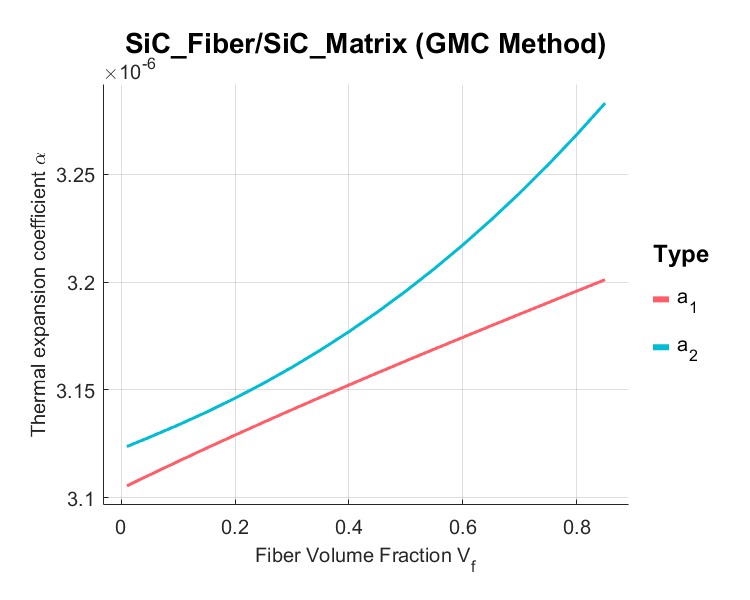
Stand-alone micromechanics effective properties using HFGMC (Flag=5)
采用HFGMC法估算复合材料属性。
S=RMaterial('Composite');
mat=GetMat(S,[29,30,31]');
inputStruct.Vf=0.28;
inputStruct.Vi=0.13;
inputStruct.Fiber=mat{1,1};
inputStruct.Matrix=mat{2,1};
inputStruct.Interface=mat{3,1};
paramsStruct.Theory='HFGMC';
paramsStruct.RUCid=105;
Ply= method.Composite.Micromechanics(paramsStruct, inputStruct);
Ply=Ply.solve();
Plot(Ply);
PlotAlpha(Ply);
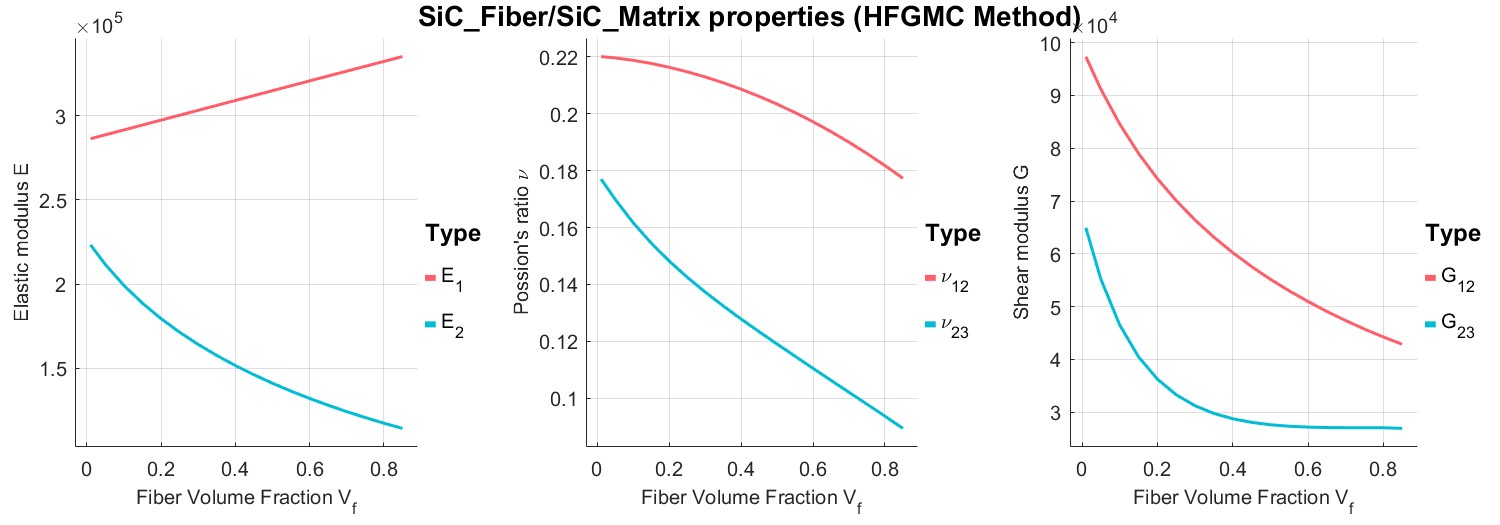
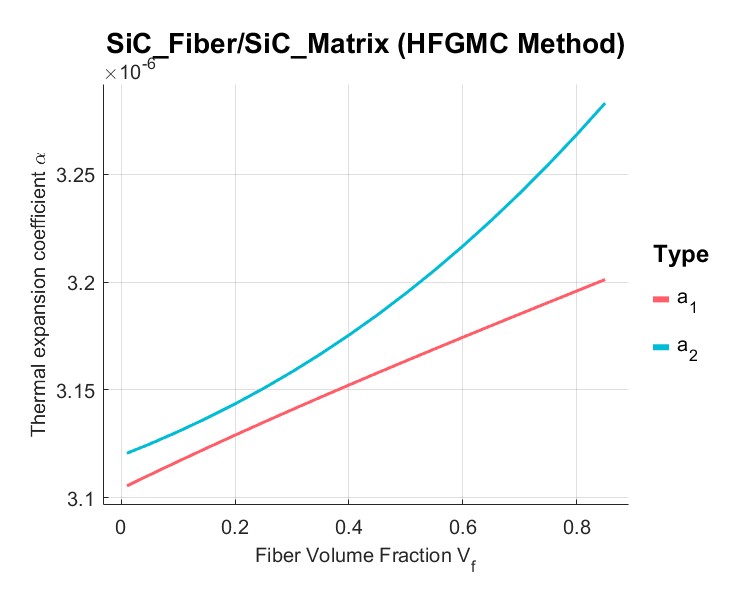
HFGMC vs FEA (Flag=6)
HFGMC和有限元方法对比
S=RMaterial('Composite');
mat=GetMat(S,[1,2]');
inputStruct.Vf=0.5;
inputStruct.Fiber=mat{1,1};
inputStruct.Matrix=mat{2,1};
inputStruct.Load.Type=[2,2,1,2,2,2];% 2-Stress 1-Strain
inputStruct.Load.Value=[0,0,0.02,0,0,0];
paramsStruct.RUCid=99;
paramsStruct.Theory='HFGMC';
Ply= method.Composite.Micromechanics(paramsStruct, inputStruct);
Ply=Ply.solve();
PlotMicroField(Ply);
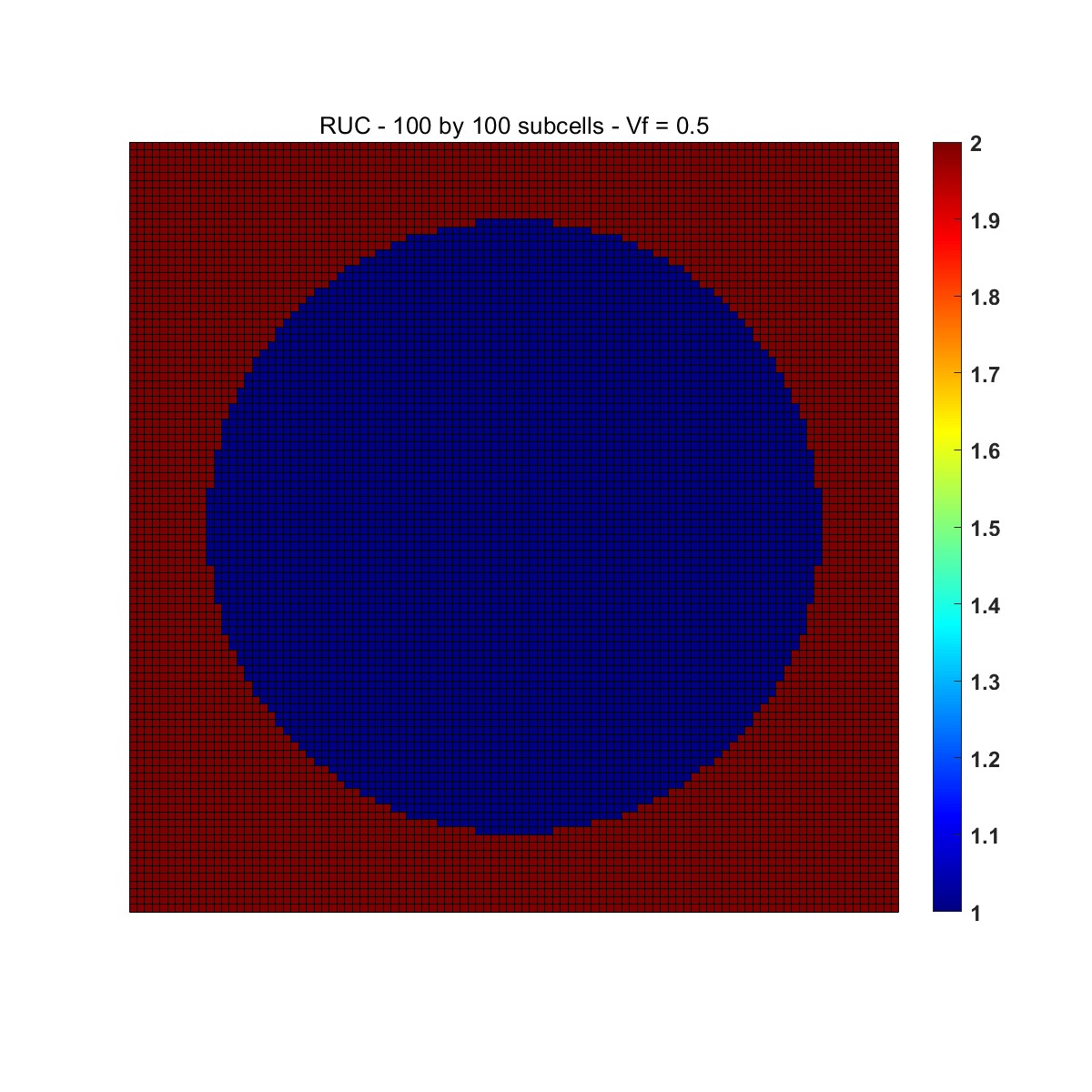


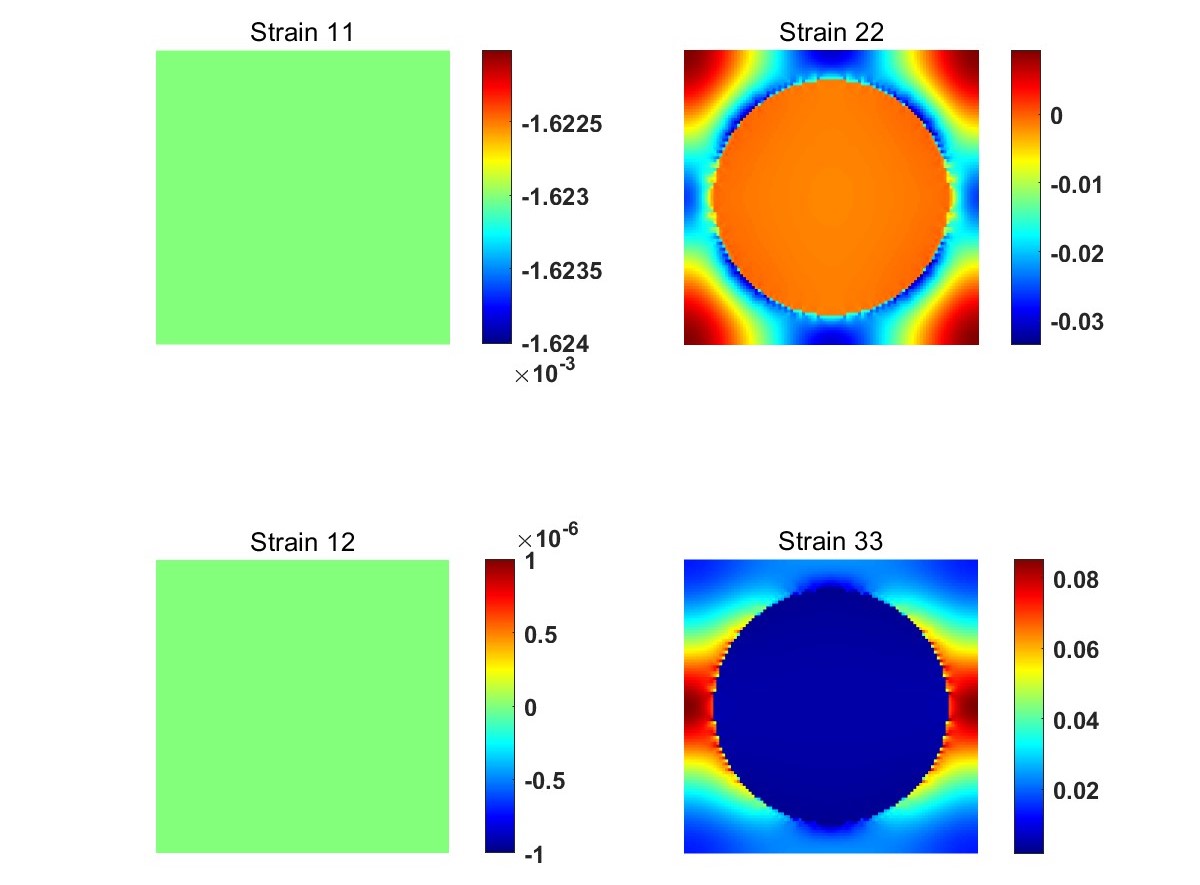


Progressive damage response using HFGMC and max stress criterion (Flag=7)
本例是微观状态下采用HFGMC方法做复合材料受剪切力作用下渐进损伤分析,可以看到树脂裂纹逐渐发展的过程,直到试件破坏,纤维没有起到承载作用,该方向的强度仅为35Mpa左右。
S=RMaterial('Composite');
mat=GetMat(S,[1,2]');
inputStruct.Vf=0.55;
inputStruct.Fiber=mat{1,1};
inputStruct.Matrix=mat{2,1};
inputStruct.Load.Type=[2,2,2,1,2,2];% 2-Stress 1-Strain
inputStruct.Load.Value=[0,0,0,0.02,0,0];
inputStruct.Load.NINC=400;
paramsStruct.RUCid=200;
paramsStruct.Theory='HFGMC';
paramsStruct.Damage=1;% Progressive damage analysis
paramsStruct.Criterion=1; % Failure criterion
Ply= method.Composite.Micromechanics(paramsStruct, inputStruct);
Ply=Ply.solve();
PlotMicroField(Ply);
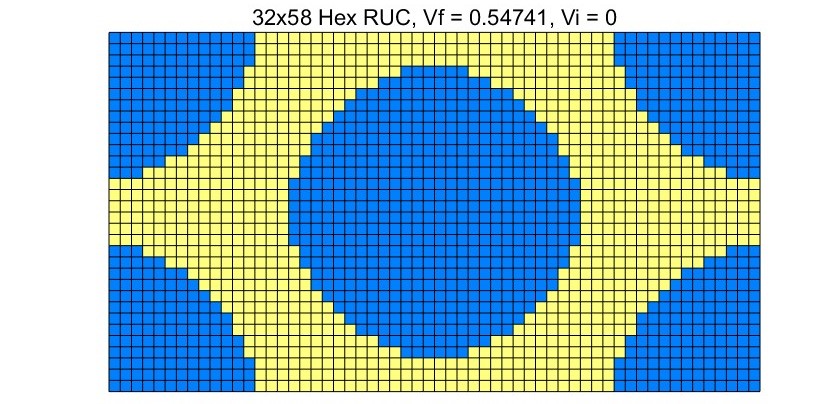

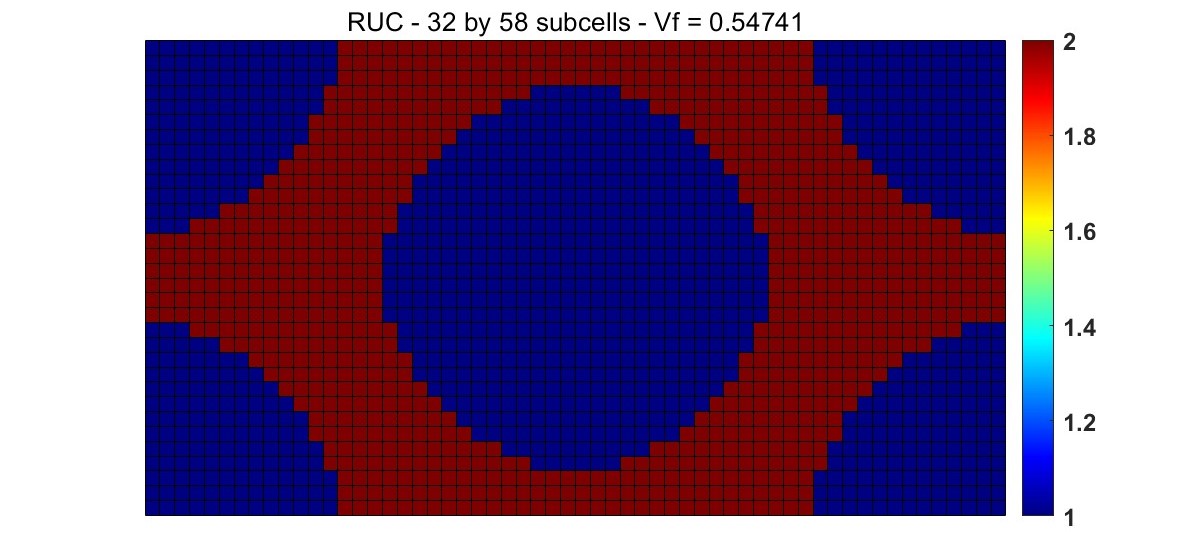
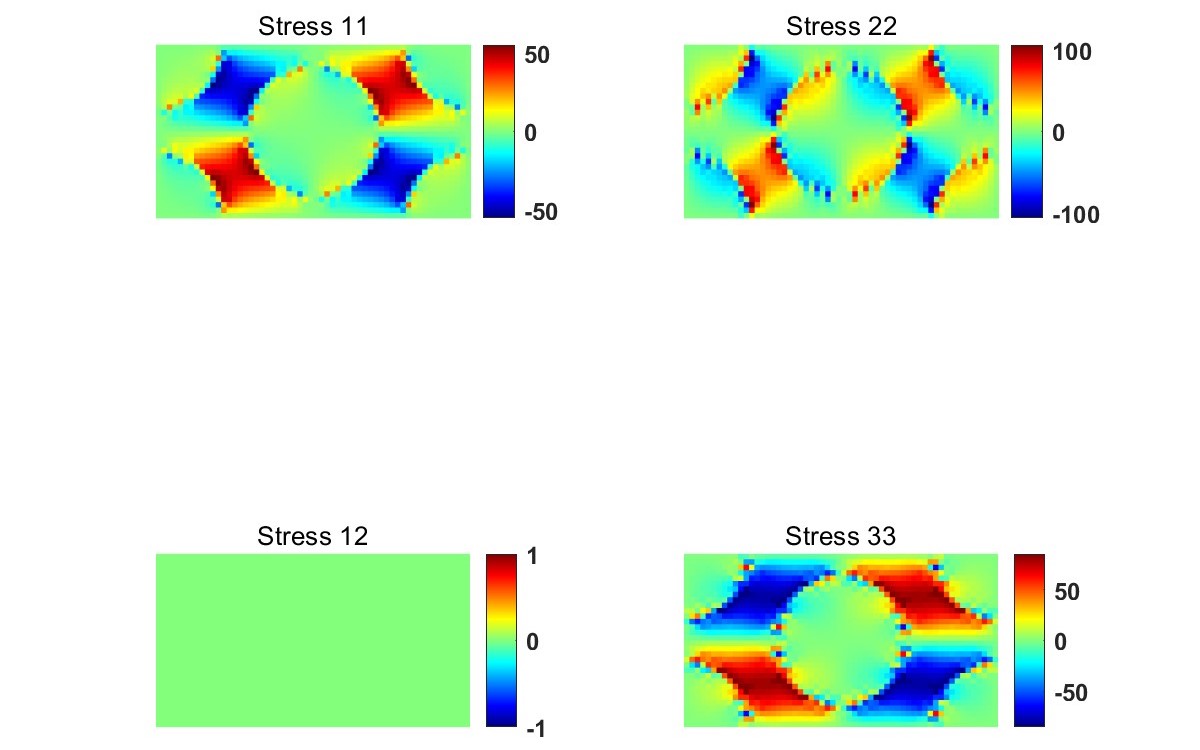

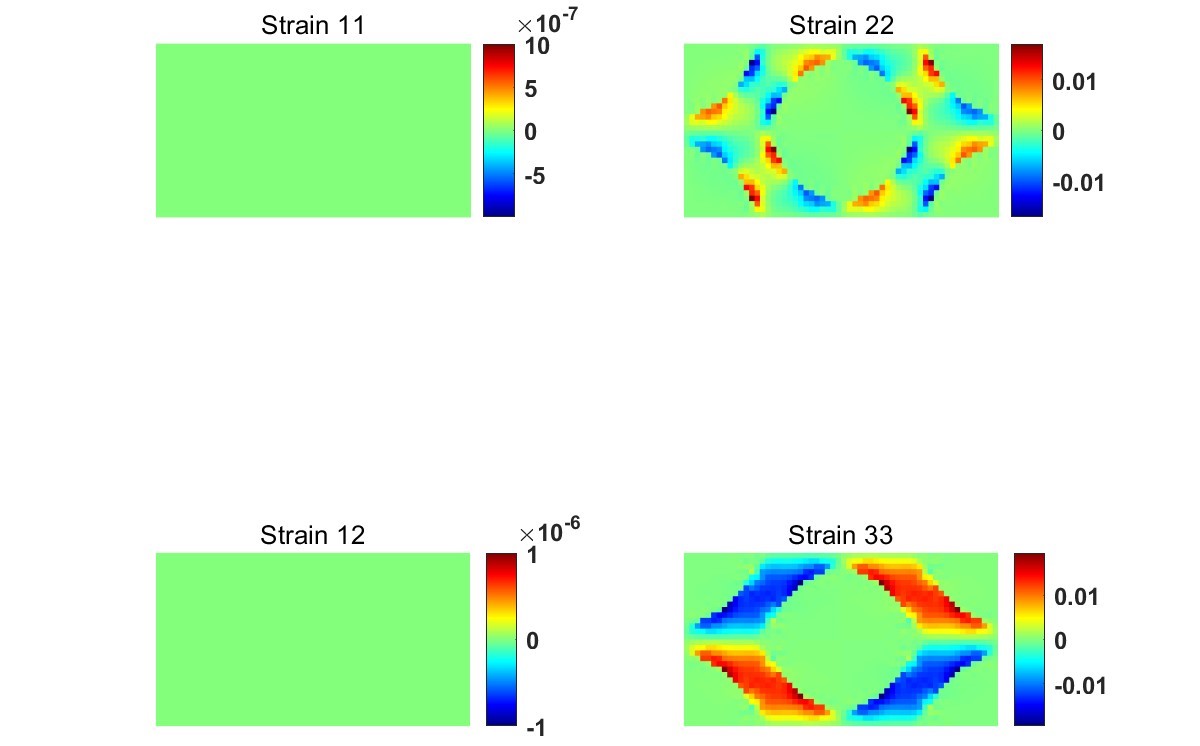


参考文献
[1] Practical micromechanics of composite materials
附录
晶格种类编号
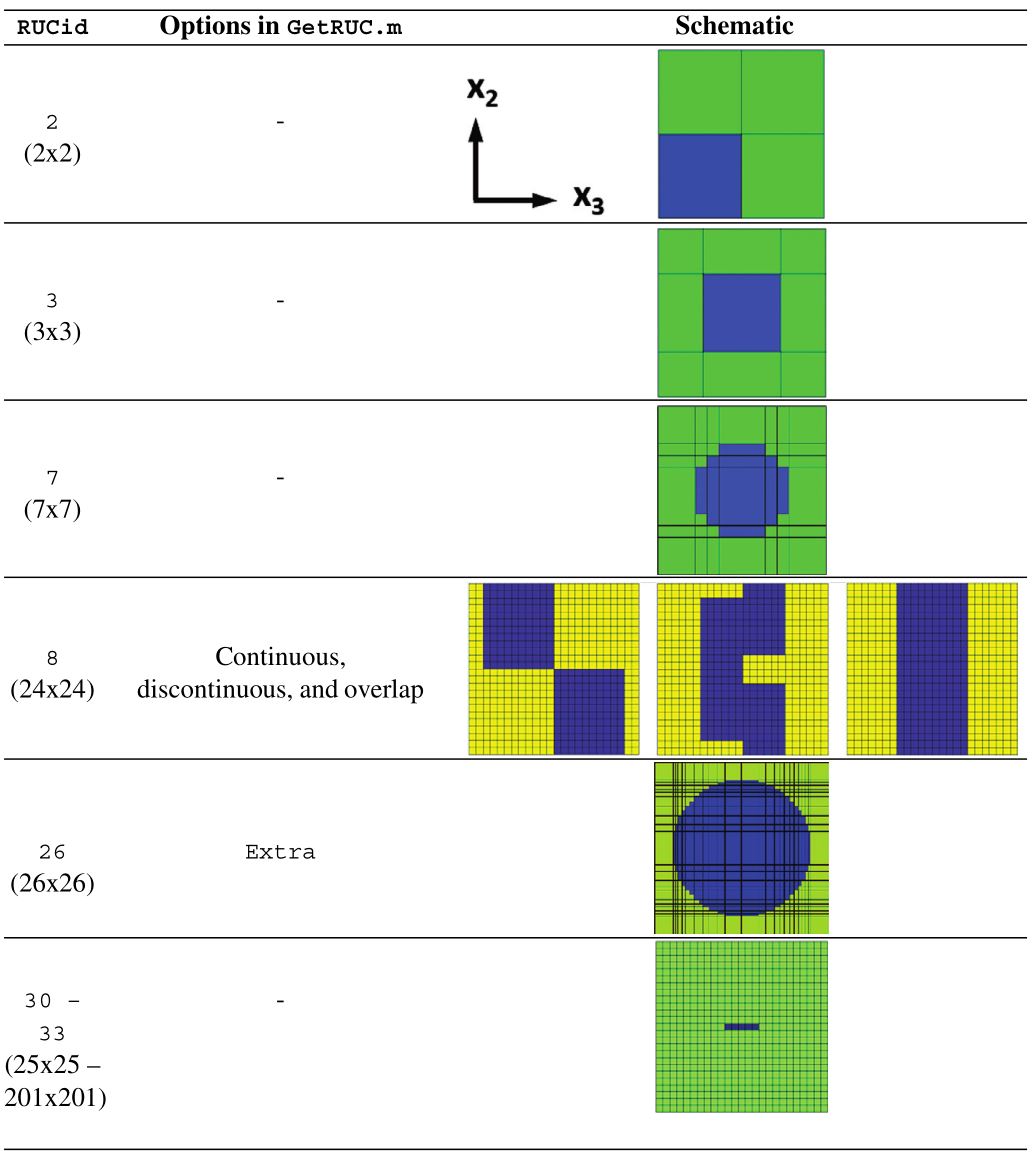
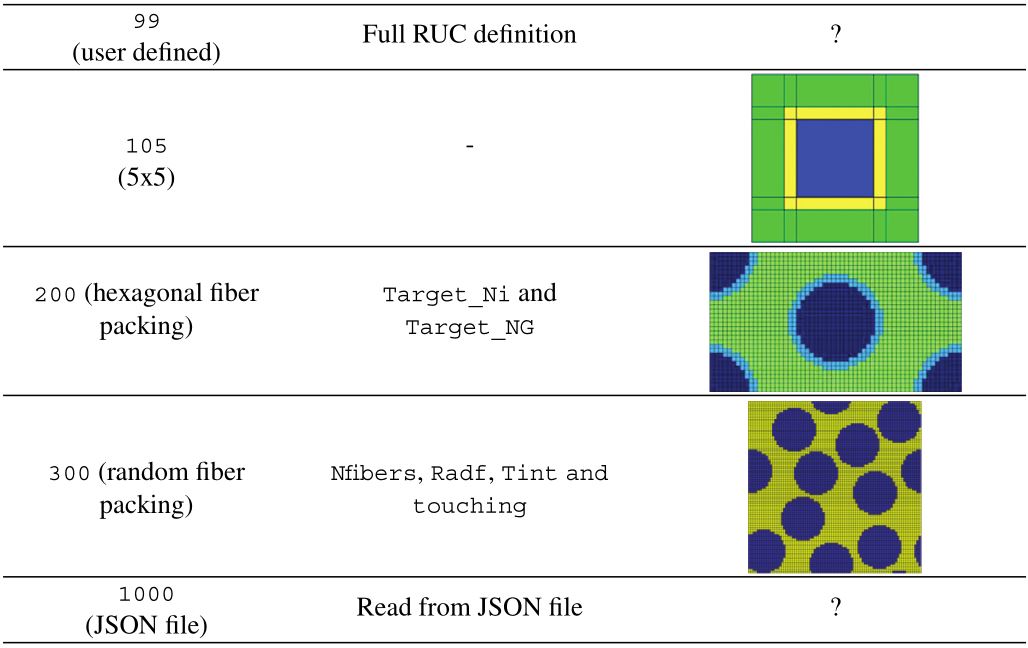
本网站基于Hexo 3-Hexz主题生成。如需转载请标注来源,如有错误请批评指正,欢迎邮件至 392176462@qq.com